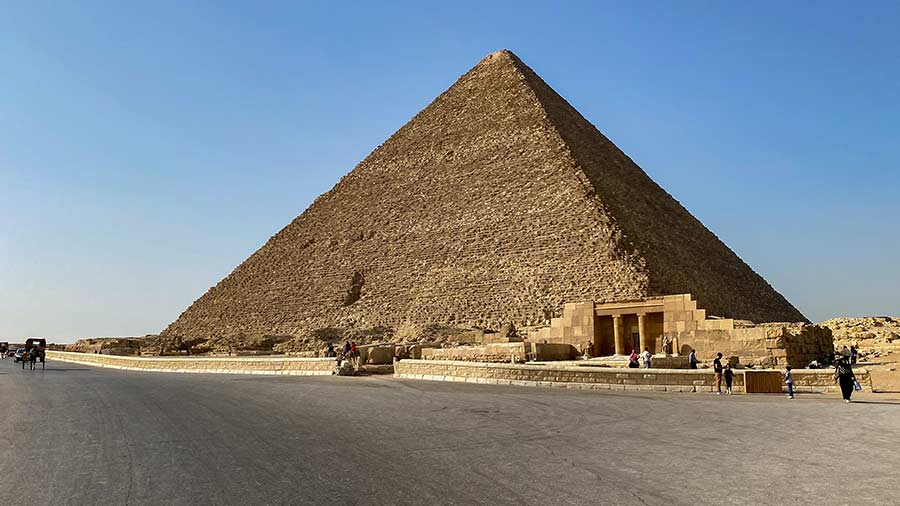Alexandria is the second largest city in Egypt. And you have guessed it right, the city is named after Alexander the Great, who founded it in around 331 BC. Alexandria was once the home to two wonders of the world, the Lighthouse of Alexandria and the Library of Alexandria, but none of them exist today. A modern version of the library was recently reconstructed in the form of Bibliotheca Alexandrina, housing a huge collection of books. There is one more very important monument that historians are still trying to find is the final resting place — the tomb of Alexander the Great.
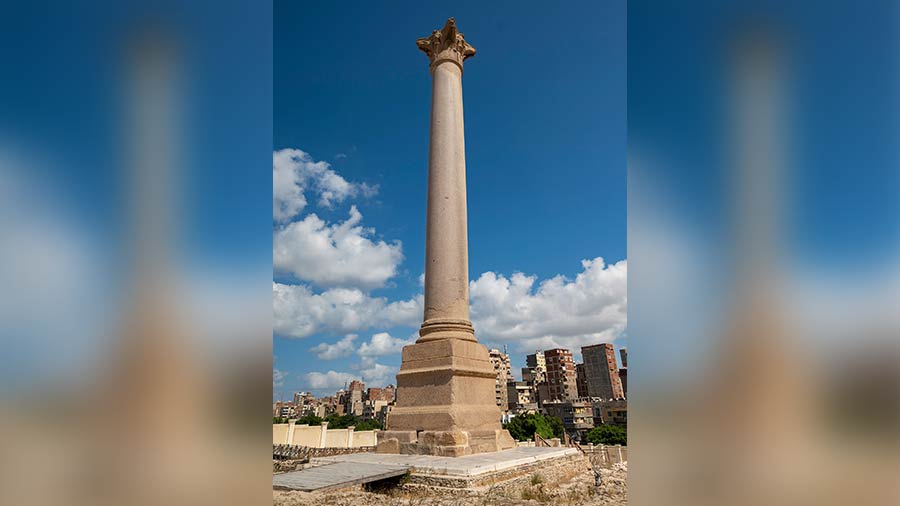
Pompey's Pillar
This city is like a small Greek town located on the Egyptian side across the Mediterranean Sea. One of the grandest structures that can still be found here in this city is Pompey’s Pillar located at the Serapeum of Alexandria. Located right in the middle of a residential neighborhood in the heart of Alexandria, this was an ancient Greek temple.
The temple is said to have been built by Ptolemy III Euergetes, who reigned from 246 BC to 222 BC. The temple was dedicated to the Egyptian-Greek deity Serapis. Nothing much remains of the temple now, which was said to have been destroyed by the orders of emperor Constantine. The temple was looted and stripped down between 325 AD and 391 AD. What remains now are the remains of some pillars and some stone sections from the temple. There are underground chambers or catacombs below the temple floor, but are off-limits to tourists.
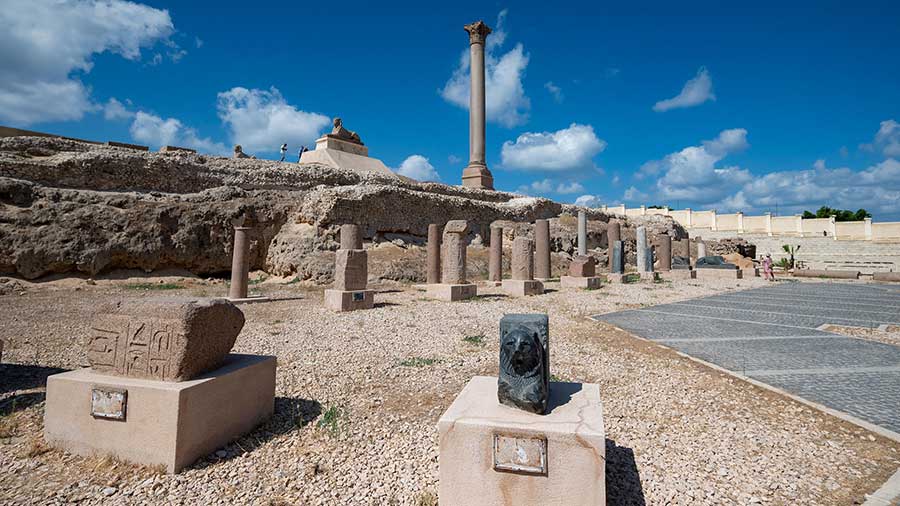
The Lion Statue and other remains from Serapeum of Alexandria
The one thing that still is very much visible and one of the prime attractions of this place is Pompey’s Pillar. In Arabic, this pillar is referred to as ‘Amud El-Sawari’. This is a Roman triumphal column, or a victory column, which was constructed to honour the Roman emperor Diocletian, who ruled between 298 AD to 302 AD.
Diocletian managed to suppress a revolt in Alexandria by Domitius Domitianus. Finally, in the year 298 AD, he captured Alexandria by defeating and executing Aurelius Achilleus, the successor of Domitius Domitianus.
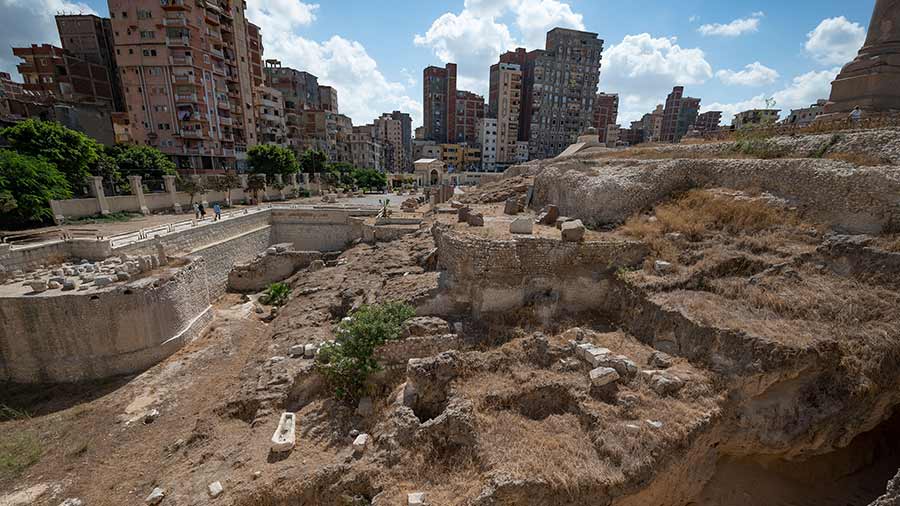
Excavated portions of the Serapeum of Alexandria
What is now visible is only the giant Corinthian pillar and the two Sphinx placed in front of the pillar. The complete standing monument rises to a height of around 88 feet from the base to the top. The middle monolithic column shaft is around 67 feet and has a diameter of 8 feet 11 inches, and is on a base that is 20-feet high.
The base and the column shaft are made of pink granite which has been mined from Aswan while the capital is made of grey granite stones.
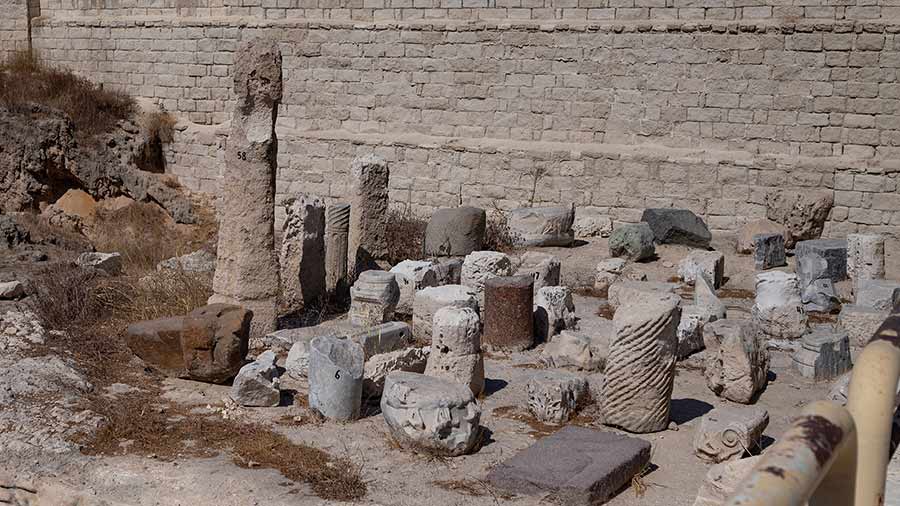
Remains of the pillar from the Serapeum of Alexandria
On top of the pillar, there used to be a statue of Diocletian which further rose to a height of 23 feet. The statue depicted him in full armour (Lorica Plumate). Historically, some references to portions of this statue could be seen scattered around the bottom of the pillar but no such pieces exist now and any remains of that original status have been lost forever.
There is an inscription in Greek on the western side of the column (solace), which consists of four lines that roughly translates ‘Publius, governor of Egypt, set this up to the most revered emperor, the guardian-god of Alexandria, Diocletian the invincible…’

Passage leading to the catacombs below the Serapeum of Alexandria
If you are visiting Alexandria on a day trip from Cairo or spending a couple of days out there then this place is a must-visit. This place is located very near another tourist site, the Catacombs of Kom el Shoqafa.
Tips for visiting Pompey's Pillar in Alexandria
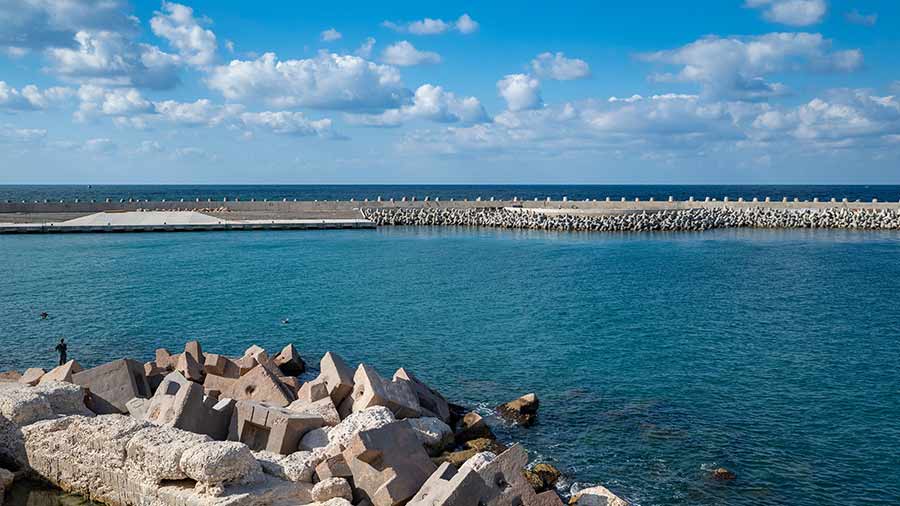
Blue waters of the Mediterranean Sea
- Photography and videography are allowed inside the temple complex however you would need a special permit for commercial photography.
- The best season to visit this place would be during the winter months between October to March when the weather is cool. Summer can be very hot but the proximity to the Mediterranean Sea ensures a cool breeze.
- This is a ticketed monument and students with a valid ID card would get a discounted ticket.
- The approximate time that it would take to cover this place would be between 30 minutes to 45 minutes.
- Keep in mind that you would need to climb up to reach the base of Pompey’s Pillar, which is located at a slight elevation.
- You are not allowed to climb down and walk around the ruins of the temple complex. Please follow the marked path around this site meant for tourists.
- There are many cafés located inside the temple complex but be ready to pay tourist prices.
- If you wish to purchase some souvenirs then there are many shops selling these around here. Be ready to bargain for a good price.
- You do not need a guide to this place and as a tourist, you can easily walk around this place which has well-marked paths.
— Working for more than a decade in the book retail & publishing industry, Subahdip Mukherjee is an IT professional who is into blogging for over 15 years. He is also a globetrotter, heritage lover and a photography enthusiast.

